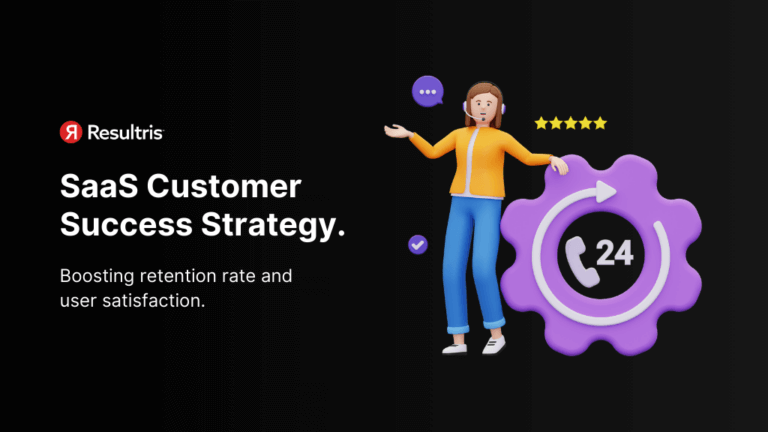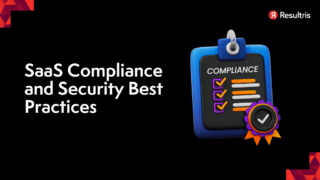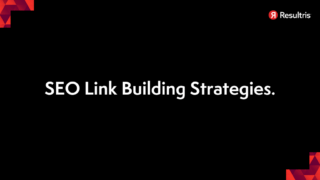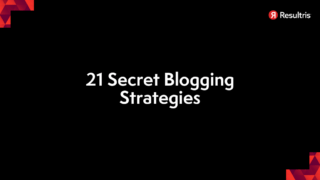

Written by: Tim Eisenhauer
Last updated:

Navigating the world of software as a service (SaaS) can be overwhelming – especially when it comes to ensuring customer success. That’s where we come in. As a leading SaaS marketing consultant, we’re here to simplify things and help you build an effective SaaS customer success strategy.
Customer success isn’t just about making sure your product works; it’s about creating a positive, meaningful experience that keeps customers coming back for more. It’s crucial not only in maintaining your existing client base but also in attracting new ones. We’ll guide you through this intricate process with our innovative strategies and data-driven insights.
Partnering with us is like having your own SaaS marketing agency on board. We’ve got the tools, tactics, and expertise to drive customer satisfaction all while boosting your business growth. So sit back, relax, and let us take care of your SaaS customer success strategy.
In the competitive landscape of Software as a Service (SaaS), acquiring customers is just the beginning. Retaining them requires a relentless commitment to their success and satisfaction. At my previous company, Axero, we set a gold standard for customer success, ensuring that once a client came on board, they were supported, heard, and valued every step of the way.
Delivering an unmatched client experience is at the heart of successful customer retention. It’s about more than just solving problems; it’s about being a partner in their success. From the moment a client chooses your service, they should feel that your team is dedicated to their success, with high standards for providing valuable and pleasant experiences.
Offering a suite of comprehensive support services is crucial. This includes everything from implementation and design services to technical consulting and strategy. By providing clients with direct access to expertise, you help them achieve their goals and transform their business, thereby solidifying their trust and loyalty.
A proactive client success approach involves standing by your customers every step of the way, offering robust support whenever needed. This includes 24/7/365 technical support, quick response times to urgent issues, and ongoing help with platform customization and adoption. By ensuring that clients have a strong voice in your product roadmap and that their feedback is actively implemented, you foster a sense of partnership and investment in their success.
Viewing the relationship with your clients as a partnership is key to long-term success. This means working closely with them to understand their needs, providing dedicated support teams, and offering personalized assistance from experts who are intimately familiar with your software. Your success should be directly tied to their success, with a commitment to meeting and exceeding their expectations.
Going beyond standard support with options like Service Level Agreement (SLA) packages can further enhance customer retention. These packages offer priority access, guaranteed solutions, and additional benefits like guaranteed uptime and resolution times. This level of support underscores your commitment to providing maximum value and ROI to your clients.
A collaborative implementation and onboarding process is essential for setting the stage for a successful customer journey. This involves working together to create a customized onboarding plan, following a transparent process, and providing support at every stage of the implementation. By ensuring a smooth transition and empowering clients to make the most of your platform, you lay the groundwork for a lasting relationship.
We’re diving headfirst into the sphere of SaaS customer success strategy. This is a realm that’s not only critical for any successful SaaS business, but it’s also constantly evolving. Let’s break down what this strategy really means.
In essence, a robust SaaS customer success strategy is all about making sure our customers achieve their desired outcomes while using our service. It’s not just about providing top-notch software; it’s ensuring that software brings real value to our customers’ businesses and lives.
Now, you might wonder why we need a specific strategy for this. Isn’t quality product or service enough? Well, in today’s competitive market, it’s simply not enough to have an excellent product; we need to ensure users are deriving maximum benefit from it too! That’s where a well-planned and executed customer success strategy steps in.
For instance, as a leading SaaS marketing consultant, we leverage data to understand our customers’ needs better and tailor our services accordingly. We track various metrics like usage patterns, user feedback and churn rates to always stay one step ahead in serving our customers.
Partnering with a proficient SaaS marketing agency can be beneficial here. They bring expertise on board which helps us refine our customer success strategies further. From conducting regular check-ins with clients to offering personalized training sessions – these agencies leave no stone unturned when it comes to ensuring customer satisfaction!
Remember folks – the key here isn’t just attracting new users but retaining them by consistently delivering value. A successful SaaS company knows its job doesn’t end after selling its services – rather that’s when the actual work begins! So let’s gear up for embracing this approach wholeheartedly because at the end of the day – happy customers make thriving businesses!
We’ve all heard that old adage, “the customer is always right.” But in the world of Software as a Service (SaaS), it’s not just about the customer being right. It’s about making them successful. That’s where a robust customer success strategy comes into play.
Let’s dive a little deeper into this. We know that keeping existing customers happy is less costly than acquiring new ones. In fact, according to Harvard Business Review, increasing customer retention rates by 5% can lead to an increase in profits from 25%-95%. Now, isn’t that something?
The key metric we’re looking at here is churn rate – the percentage of customers who end their relationship with a service over a certain period. High churn rates aren’t good news for any SaaS business because it means you’re losing more customers than you’re gaining. With an effective customer success strategy in place, we’d see our churn rates take a nosedive and our retention figures shoot up.
For instance, let’s say your company starts with 1000 customers and loses 50 over one year:
| Customers at Start | Customers Lost | Churn Rate | |
|---|---|---|---|
| 1000 | 50 | 5% |
That’s not terrible but imagine if we could reduce that number further through effective customer success strategies.
Next up on our list is Customer Lifetime Value (CLV). This might sound like jargon straight outta some highfalutin’ SaaS marketing consultant handbook or something you’d hear tossed around at a hip SaaS marketing agency meet-up – but trust us, it’s crucial for your business.
Simply put, CLV represents the total amount of money a customer is expected to spend in your business, or on your products, during their lifetime. It’s an important metric that helps us understand a customer’s worth to our company over time.
For example:
| Average Purchase Value | Number of Repeat Sales | Average Customer Lifespan | |
|---|---|---|---|
| $50 | 8 | 3 years |
The CLV for this scenario would be: $50 x 8 purchases x 3 years = $1200
This shows that every customer is worth $1200 to us over the course of three years. Imagine if we could increase the lifespan or the number of repeat sales with effective customer success strategies!
In conclusion, when we focus on making our customers successful, it’s not just about providing excellent service and creating happy customers. It’s about improving retention rates, reducing churn rate, and increasing the lifetime value of each customer – all vital elements for sustainable growth in any SaaS business.
Let’s dive right into the heart of what makes a successful customer success strategy. There are several key components that we’ve found to be instrumental in the world of B2B SaaS marketing, and we’re excited to share them with you.
We can’t stress enough how crucial an effective onboarding process is for any SaaS company. It’s your first real interaction with your customers, and it sets the tone for their entire experience. An intuitive onboarding process reduces churn rate and increases customer satisfaction, which directly impacts your bottom line.
Think back to when you worked with a SaaS marketing consultant or agency. If they walked you through their processes step-by-step, educated you about their tools and features, and made sure you felt comfortable before moving forward – wouldn’t that make a great impression?
Proactive communication is another key component in our list. We’ve seen time and again how being proactive rather than reactive in communicating with customers can drastically improve retention rates.
For instance, consider setting up automated email sequences that keep your customers informed about new updates or potential issues even before they encounter them. The benefits are twofold: it shows customers that you’re always looking out for them, plus it saves time by reducing incoming support tickets.
Here’s something we’ve learned from our years as a SaaS marketing agency: every piece of customer feedback is invaluable – whether positive or negative! Actively soliciting feedback gives your users a voice while providing insight into areas where there might be room for improvement.
Monitoring user behavior also plays an integral role here. Tools like heatmaps or session replays can provide valuable insights into how users interact with your product – what works well for them, what doesn’t, where they face challenges etc. This data then allows us to refine our approach based on actual user experiences instead of assumptions.
So there you have it – the onboarding process, proactive communication, and customer feedback and monitoring form the pillars of an effective SaaS customer success strategy. Remember, a successful strategy isn’t static; it’s continually evolving based on your customers’ needs and industry trends.
When we’ve put in all our effort to shape a rock-solid SaaS customer success strategy, it’s crucial to measure its effectiveness. To do this, we’ll need to monitor key performance indicators (KPIs) that speak volumes about customer satisfaction and product utility.
First off, let’s consider churn rates—the percentage of customers who cease their relationship with a SaaS company over a given period. If we’re doing our job right as your trusted SaaS marketing consultant or agency, you should see this rate decrease over time.
Then there’s product usage—how often and how long are customers using your software? We want these numbers high because they indicate that customers find value in our product. Here’s what an example table might look like:
| Product Usage KPI | Jan | Feb | Mar |
|---|---|---|---|
| Daily Active Users | 1000 | 1100 | 1200 |
| Session Duration (in minutes) | 30 | 35 | 40 |
Next up is customer satisfaction—we can gauge this through surveys and feedback forms. The Net Promoter Score (NPS), for instance, asks one simple question: “On a scale of 1-10, how likely are you to recommend us?” The higher the score, the better job we’re doing at keeping those clients happy.
And lastly, upselling and cross-selling opportunities tell us if existing customers are ready for more advanced features or other products in our catalog. It shows whether they trust us enough to invest further.
By keeping track of these metrics and adjusting our strategy accordingly, we ensure that every move brings us closer to achieving ultimate customer success.
We’ve taken an in-depth look at the SaaS customer success strategy throughout this article. Now it’s time to tie everything together and reinforce why a robust and effective strategy is crucial for your business.
In the competitive world of SaaS, we can’t afford to overlook any aspect that might give us an edge. That’s where a SaaS marketing consultant or agency can play a key role. They bring specialized knowledge and experience that can shape our customer success strategies, ensuring we’re not just meeting but surpassing our customers’ expectations.
Let’s recap some significant points:
Remember these figures?
| Statistic | Value |
|---|---|
| Customer retention rate increase by 5% | Profit increase by 25%-95% |
| Probability of selling to existing customer | 60%-70% |
| Probability of selling to new prospect | 5%-20% |
These numbers are compelling evidence that focusing on customer success isn’t just beneficial—it’s essential for a thriving SaaS business.
With the right tools in place like CRM systems, automation software, and data analytics platforms—we can streamline our processes while still delivering personalized experiences.
The journey towards achieving ultimate customer success might seem daunting at first glance; however, with keen attention to detail, constant innovation based on feedback, and assistance from experts such as a reliable SaaS marketing agency—we’re well-equipped to tackle the challenge.
We hope that this article has provided valuable insights and practical guidelines. Remember, there’s no one-size-fits-all strategy, but with continuous learning and adaptation—we can all achieve customer success in our SaaS businesses.




